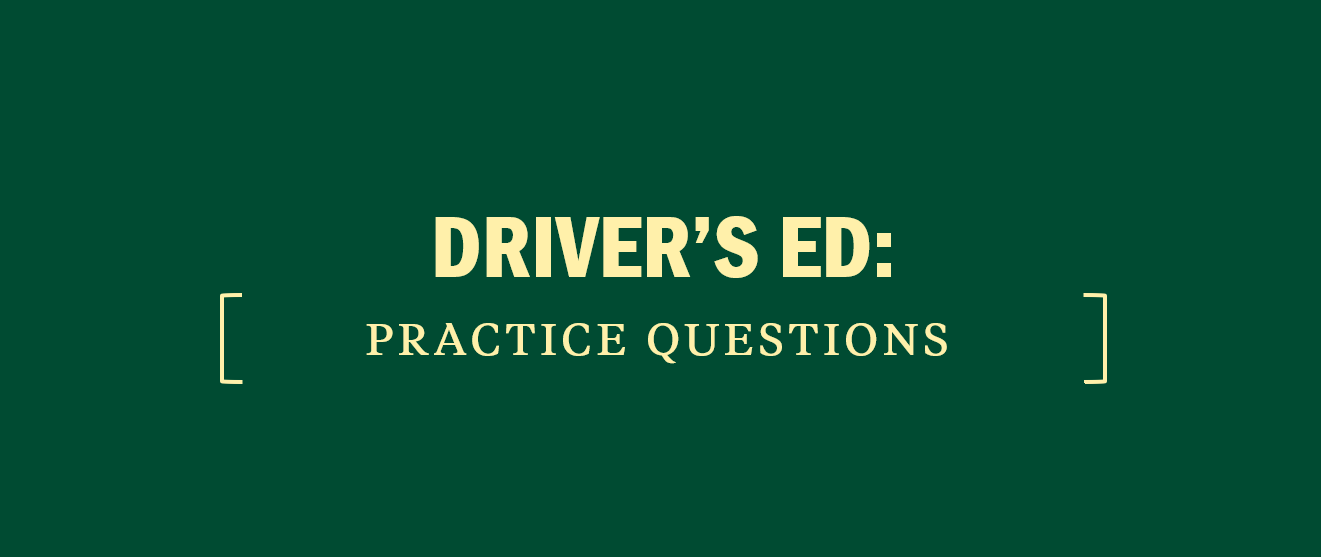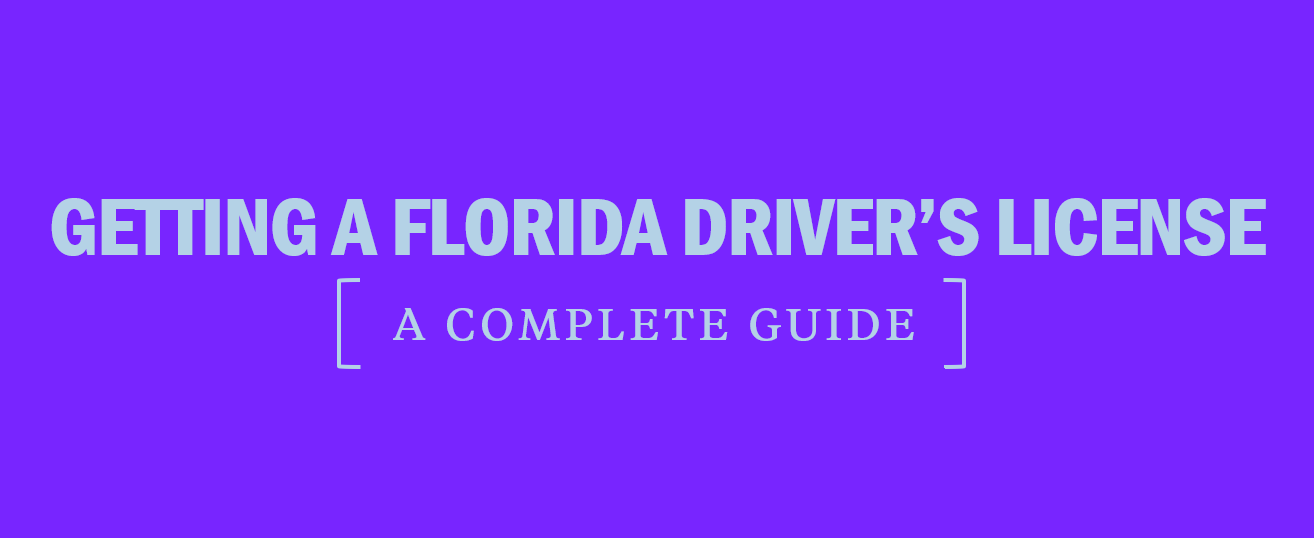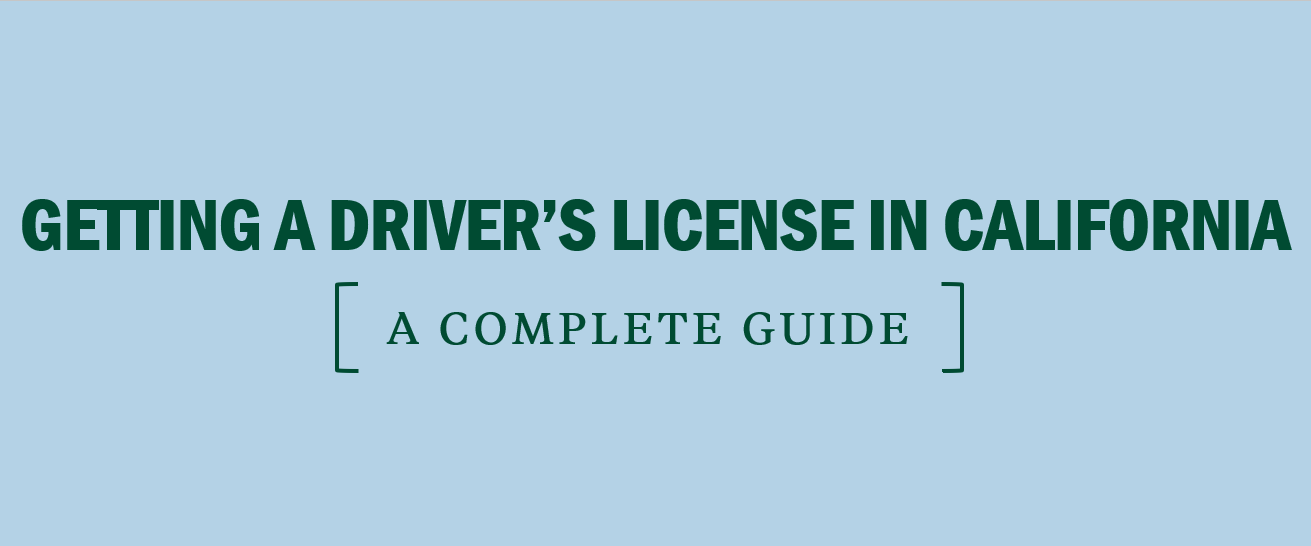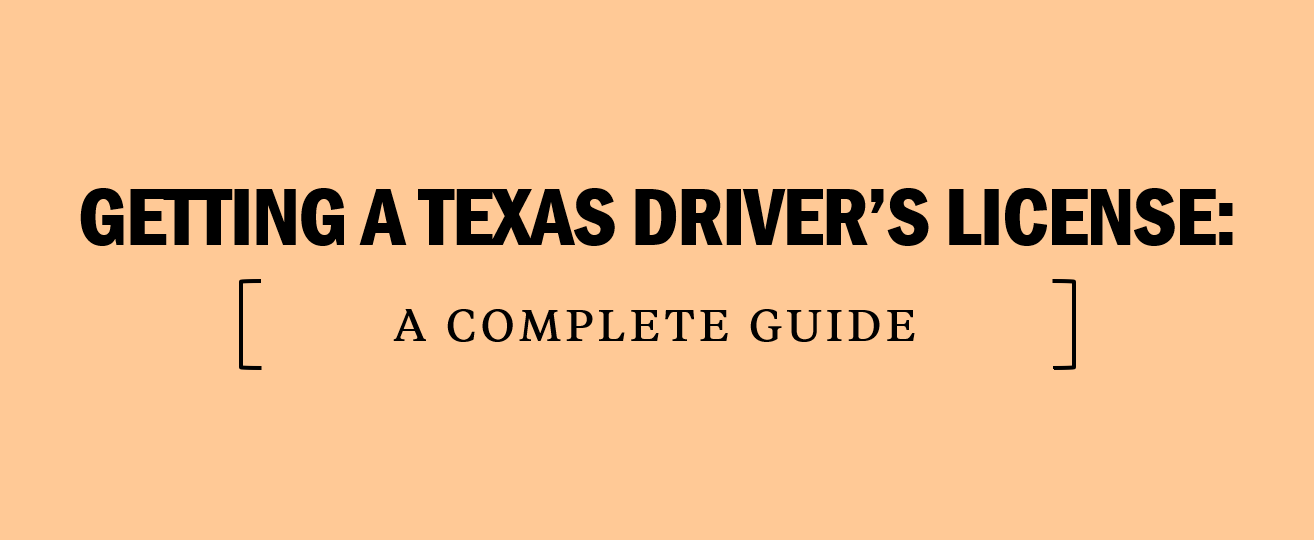Driver's Ed Practice Questions
/in Drivers Ed /by adminThink you’re ready to take your driving test? Try out some practice questions!
Question 1
What should you do at a yellow traffic light?
A: Slam on the brakes.
B: Speed up to cross before the light turns red.
C: Stop if it’s safe to do so.
D: Drive through the intersection, but slowly.
Answer 1
C: At yellow traffic lights, stop if it’s safe to do so.
Question 2
You’re approaching a flashing red light at an intersection. Cars on the cross street don’t have a light. What should you do?
A: Stop completely and drive ahead when you can safely do so.
B: Stop and give the right of way only to the vehicle on your right.
C: Keep going. Stops are for solid red lights.
D: Perform a rolling stop since the red light is flashing.
Answer 2
A: Stop completely at the flashing red light and continue driving only when you can safely do so.
Question 3
You are driving on the highway and wish to pass the vehicle in front of you. What is the first thing you should do?
A: Honk your horn to keep from surprising the driver
B: Check to see if everything is clear
C: Shake your arm out the window
D: All choices are incorrect
Answer 3
B: If you wish to pass the vehicle in front of you on the highway, you must first make sure everything is clear.
Question 4
Stella is driving in the far right lane of a multi-lane road, but she needs to make a left turn that’s coming up in 50 feet. What should she do?
A: Brake and wait for vehicles to go around her.
B: Drive past the turn and keep going until she finds a safe place to turn around.
C: Cut across the lanes to make the turn in time.
D: Slow down traffic enough to make her turn.
Answer 4
B: Because she doesn’t have enough time to slow down properly and use her turn signal to warn other vehicles, Stella should keep going and turn around later.
Question 5
Emma has her vehicle’s gear on reverse while turning the wheel right. Which way will her vehicle go?
A: Emma’s vehicle will drive forward to the right.
B: Emma’s vehicle will back out to the left.
C: Emma’s vehicle will back out to the right.
D: Emma’s vehicle will not know what to do.
Answer 5
C: Emma’s vehicle will back out to the right with the gear on reverse while turning her steering wheel to the right.
Question 6
Before changing gears to reverse it is important to ________.
A: have two hands on the steering wheel
B: have a clear view of the front windshield
C: let go of the brake
D: have a clear view of the rear window
Answer 6
D: When you’re about to drive in reverse, it’s important to have a clear view of the rear window before you change gears.
Question 7
How is your following distance determined?
A: Counting seconds from when the driver in front of you passes an object until you pass it.
B: Observing how long it takes the person behind you to pass the object you just went by.
C: Observing how long it takes you to get close to the vehicle in front of you.
D: Observing how quickly you can pass mile markers.
Answer 7
A: Following distance is determined by observing how long it takes you to pass the same object the vehicle in front of you passes.
Question 8
All of the following options are good strategies to avoid fatigue EXCEPT:
A: Making sure your car isn’t too warm
B: Switching drivers often
C: Driving more aggressively
D: Rolling down the window
Answer 8
C: Having the right temperature, switching drivers often, and rolling down the windows are all ways to avoid fatigue.
Question 9
How can you best limit cell phone distractions while driving?
A: Always using the hands-free function.
B: Putting your phone away and on mute.
C: Keeping phone conversations short and refraining from texting.
D: Talking only to family, never to friends.
Answer 9
B: You can limit cell phone distractions while driving by putting your phone out of reach and on mute.
[ Read Next: SAT vs. ACT: Which Test Should You Take? ]




